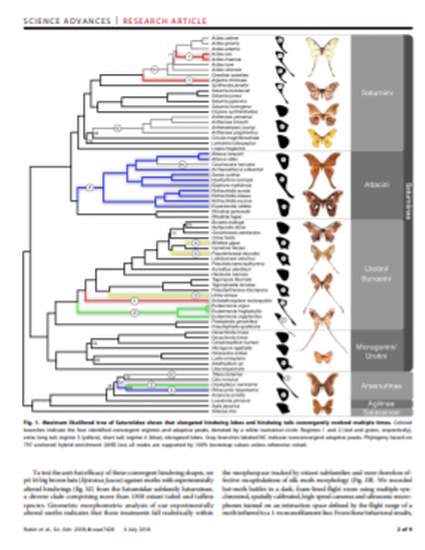
Prey transmit sensory illusions to redirect predatory strikes, creating a discrepancy between what a predator perceives and reality. We use the acoustic arms race between bats and moths to investigate the evolution and function of a sensory illusion. The spinning hindwing tails of silk moths (Saturniidae) divert bat attack by reflecting sonar to create a misleading echoic target. We characterized geometric morphometrics of moth hindwings across silk moths, mapped these traits onto a new, robust phylogeny, and found that elaborated hindwing structures have converged on four adaptive shape peaks. To test the mechanism underlying these anti-bat traits, we pit bats against three species of silk moths with experimentally altered hindwings that created a representative gradient of ancestral and extant hindwing shapes. High-speed videography of battles reveals that moths with longer hindwings and tails more successfully divert bat attack. We postulate that sensory illusions are widespread and are underappreciated drivers of diversity across systems.
Available at: http://works.bepress.com/jesse_barber/33/
